To say that there was some level of trepidation as the game Teutons from @Hollandspiele was being set up would be an understatement. Very few games or game systems can accurately cover battles that span 70 years of time in total between them. Let alone a set of rules that accurately captures the technological differences during the period 1870 to 1940.
Teutons is a diminutive package, 2 medium sized maps and a couple of hundred thick cut counters. I imagine your first question is, how will this package address the end of linear combat? Followed quickly by the evolution of industrialized military theory and finally the incarnation of maneuver warfare? Strap in for part 1 of a three part exploration of Lou Coatneys triple play – Teutons Assault on the West.
The proto German state, was one of the first to nations to leverage the dense dark Ardennes for a lighting strike into France. It would happen 2 more times in the next 70 years. Does anyone read history?
The 1870 exploration uses same maps as all the other battles just a slightly more restricted kick off area, borders are clearly marked for each scenario (as the changed over time). The French are caught somewhat on the hop and have the wrong forces in the wrong locations at start. The rules provide for Fort defenses centered round cities such as Metz. The decision space for the Prussians is to see how quickly they can knock Paris out and force a surrender that happened historically, the French have the challenge of stalling for time to allow a build up of force and defenses in and near Paris.
Intelligence is absolute for both sides given low counter density and no hidden movement rules, and victory conditions for both sides are known at the start. Player Objectives follow city capture in this case placing Paris out of supply. Nothing too involved or complex here, you are placed in the Role of Overall commander of all armed forces, a operational/strategic role using abstract supply, where tactics and nuance will not be required.
Given the scale unit formations are kept to Army/Corps level with little differentiation of the OOB.
A standard CRT informs the combatants of the results using a 1d6 spread. A different CRT is provided for 1870 than the other battles in the box. Supply and Logistics is abstracted linkage to map edges with all the usual caveats regarding ZOCs, adjacency etc. The impact is severe – no combat result recovery, and a penalty shift on the CRT. Units can be eliminated in found to be OOS when disrupted.
The CRT uses standard column shifts and DRMS on a odds based table resolved with a 1d6 as previously mentioned. Most results up to 5:1 use a defender retreat X number of hexes result, at 5:1 you have a 33% of eliminating the enemy. Which jumps to 66% at 6:1. Obtaining these odds with the low counter density, stacking rules and low combat values is very difficult. So expect to be forcing the retreat and when you do the attacker is choosing direction and distance up to the limit of the result. I like that aspect.
Historical scripting is by the scale and nature of the game going to be present here. Opening gambits are limited, but the go forward play can allow some exploration. It is probably fair to say that the units /scale /CRT dont offer you too many diversions from the historical track. Stupid play as we shall see can generate some ‘off rails’ results ;).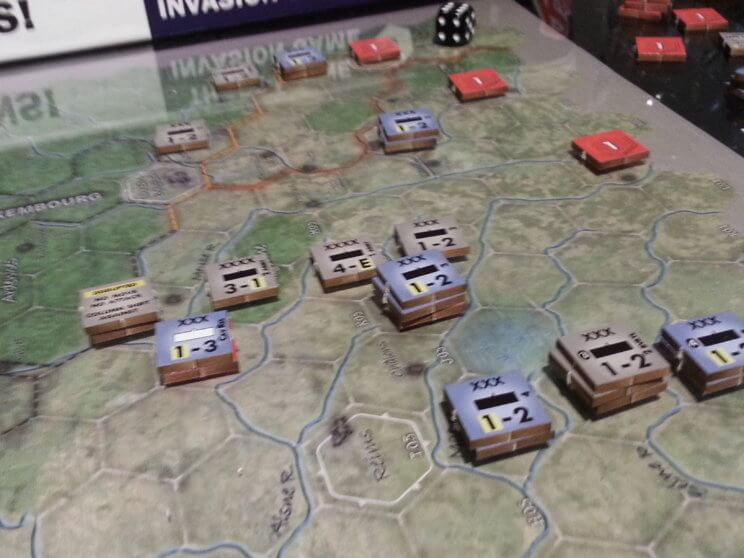
Replay-ability is a paramount concern for gamers. What is my bang for the buck? Lets set that aspect aside until we play all three scenarios. The Play Time is brisk once you grok the rules. Something about either the layout or the outline had me flipping the scant few pages to find what I was looking for. I’m not sure that was a problem or a focus issue. Components are excellent, you got to love thick counters with a slick stain finish otherwise this one ain’t for you. Overall I liked the map art a lot, its just a pity we cant get these printed in one piece. I touched on the ability to digest the rules above, not a big issue everything is aimed at the newer gamer so that is a nice touch.
Lets wrap up the game play here:
This attack above spells the death knell for the Prussian war effort. Despite terrain effects the encirclement means retreats become problematic and the fragile forces are quickly destroyed.
This means the Prussians are now really without the combat factor punching weight to do much more damage. The French can now sit back on defense reinforce where the Prussians focus.
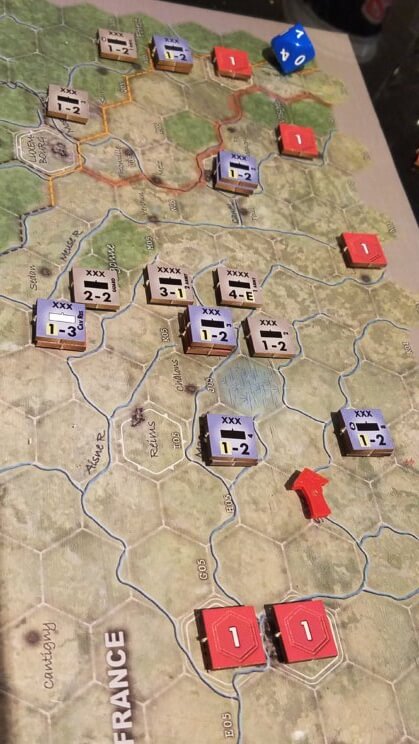
The Prussian side resigns.
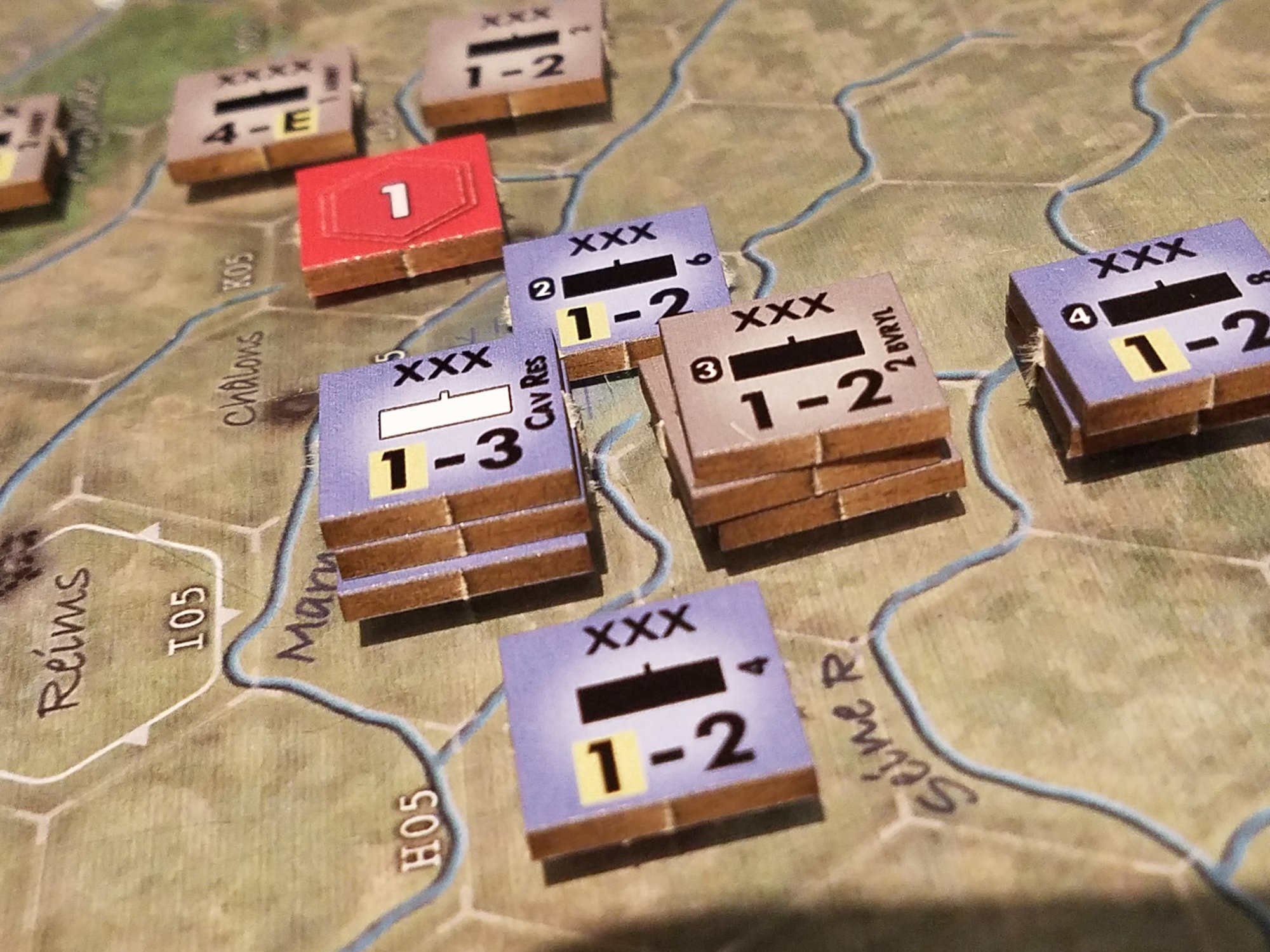
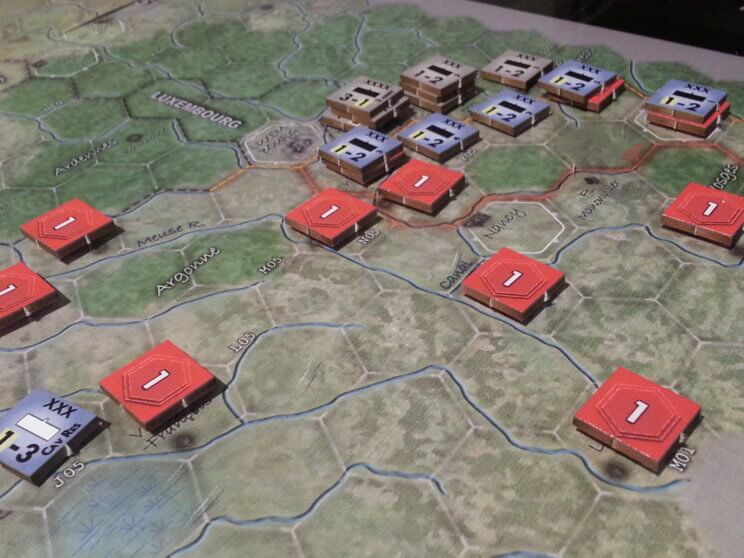
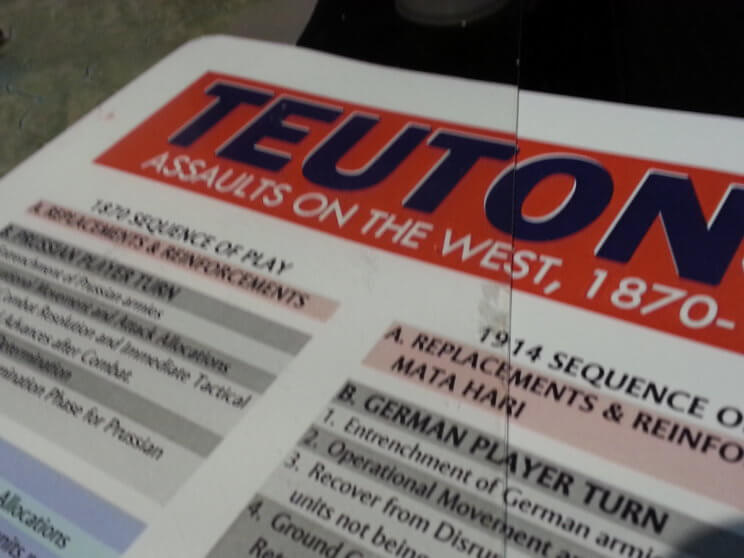
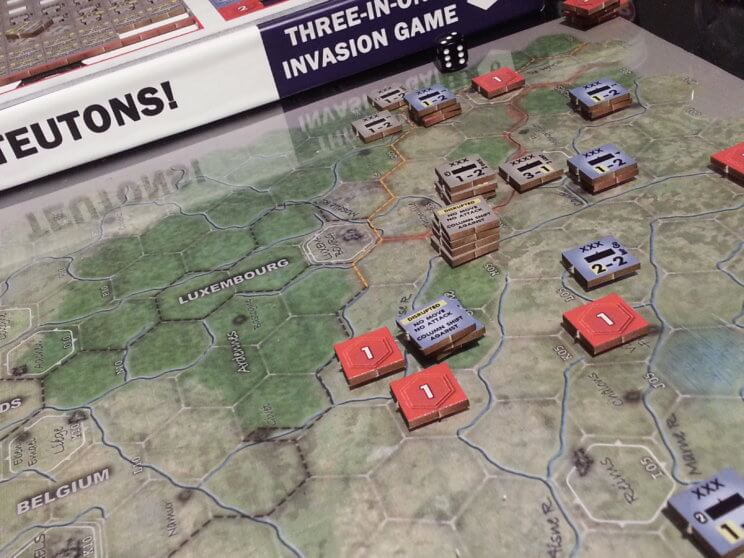
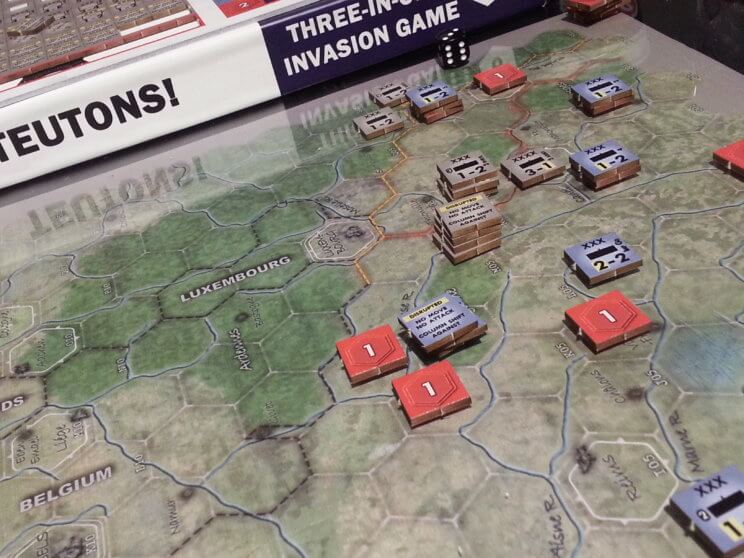
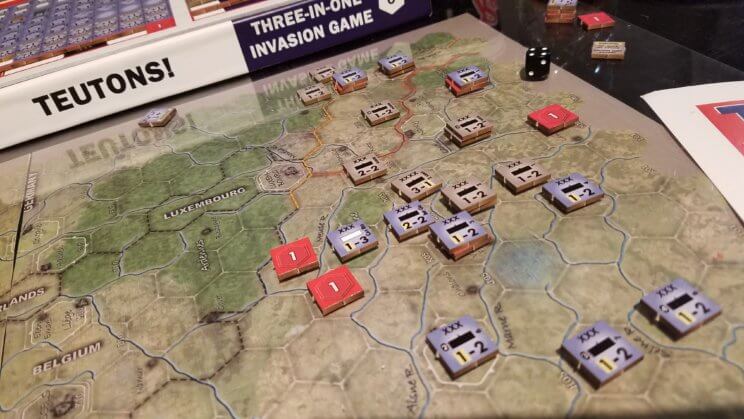
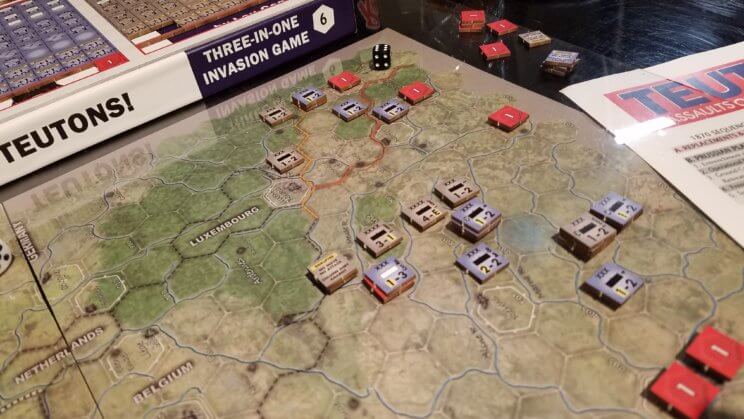
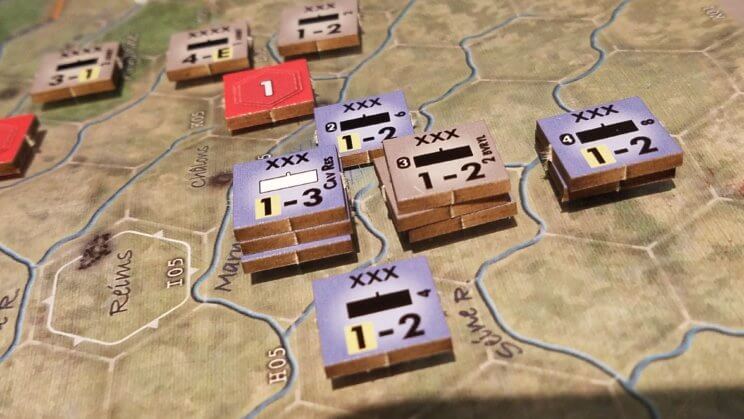
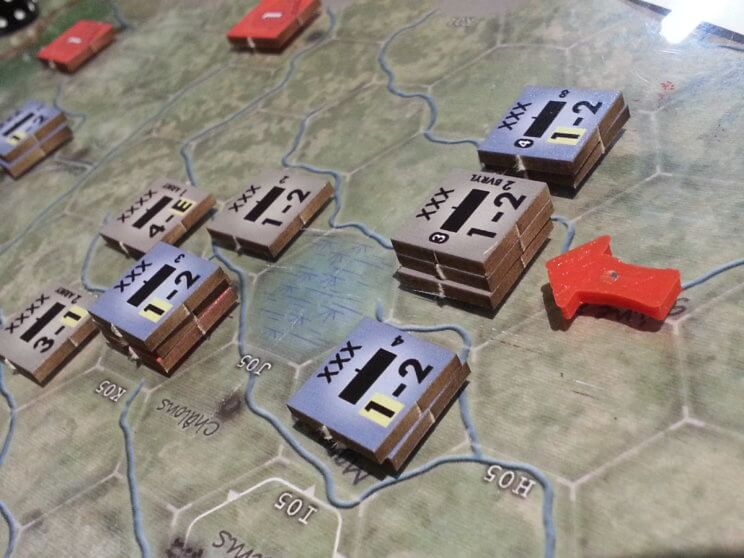
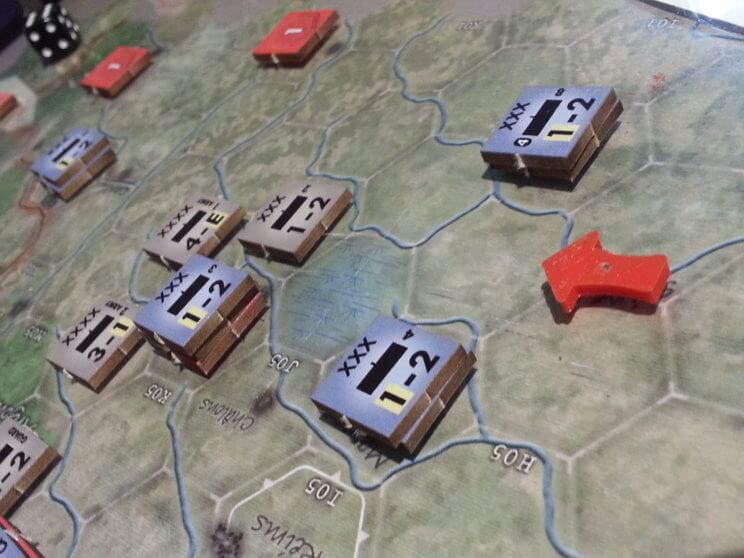
Argh – side nibs!!! haha
Hey – who would you say is the target audience for these games? I have some limited experience with them, but they come across as too little / too simple to keep my interest over the long haul.
Yeah I think these games in particular Lou’s and the Sword&Shield games are entry level for some. For others is not often covered battles. The S&S system is the RIGHT level of detail for Medieval combat, if anything command was simpler then than Roman times for instance. Some of these are 1 or 2 plays. But others such as Agricola, Ukraine Crisis or Optimates et Populares are multi play treats.
Just got an e-mail from Hollandspiele saying their maps are available in one piece now.
Well, it looks like I could bang out a session or two faster than if I was playing Compass Games’ ON TO PARIS! Still got some older titles that cover this war (SPI’s old FRANCO-PRUSSIAN WAR from 1972 or thereabouts and a Miranda treatment of the war in S&T). But I’d guess this is easier. It will be interesting to read your take on what lessons are learned across the three campaigns!
Yes. That is the attraction. Simple game across 3 periods.